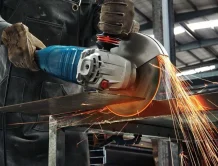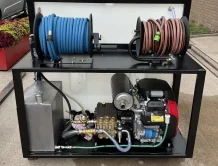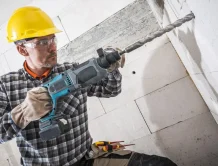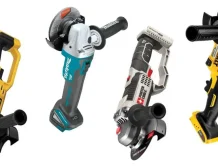In the market for various tools, you encounter structures designed for specific activities, and one of the most commonly used items in this category is the drill. The drill is designed for drilling holes in various surfaces and can perform hole-drilling operations through the rotation of its bit. This mechanism is the operational principle of regular drills, which excel in creating holes and rapidly opening and closing screws. In contrast, the hammer drill is an advanced version of this tool with enhanced performance. Further details on what is a hammer drill are explained below.
Hammer drills, in addition to being able to create holes and tighten or loosen screws, can perform heavy and high-speed impacts in the demolition of some structures, including concrete. However, this capability can be utilized for creating holes in tough and hard objects. In general, a demolition hammer alone cannot efficiently install screws and drill holes. Both the mentioned uses, along with the demolition feature, are available in the hammer drill.
Types of Hammer Drills
Hammer drills, like many structures, have specific classifications. The main criterion for categorizing this tool is its power source, and it is divided into two groups: electric and cordless. The electric type is equipped with a cord that starts working by connecting directly to the mains. This model has high power and can remain on as long as it is connected to electricity. On the other hand, cordless drills contain batteries instead of power cords, providing the necessary energy for the drill for several hours.
These batteries are recharged after energy depletion. Cordless hammer drills have a shorter runtime and less power. However, they can be useful in situations where access to electricity is not available. Additionally, this type of cordless hammer drill is lightweight and portable due to the absence of power cords, making it easier for the operator to use.
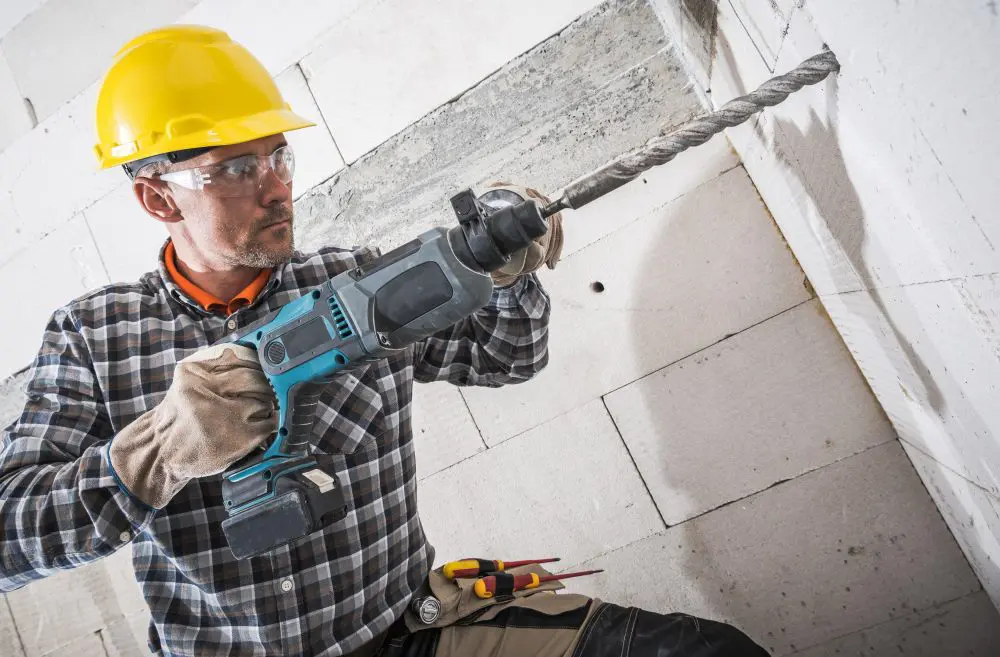
Structure of a Hammer Drill
As expected, the components of a hammer drill are slightly different from those of a regular drill and a demolition hammer, as it combines the functionalities of both. This tool is the result of the assembly of many small and large parts that complement each other. Understanding these components helps us have a better grasp of what a hammer drill is. Some of the most important components of a hammer drill include:
Gearbox:
The gearbox is a crucial part of the hammer drill that helps control the speed and torque of the drill. It plays a vital role in transmitting power from the motor to the drill bit.
Body:
The body of the hammer drill is the outer casing that houses the internal components. It provides protection and stability to the working parts of the tool.
Power Trigger:
The power trigger is the button or switch that controls the operation of the hammer drill. Pressing or releasing the trigger initiates or stops the drilling action.
Mode Selector Switch:
The mode selector switch is a feature specific to hammer drills. It allows the user to choose between different modes, such as drilling, hammer drilling, or hammer-only mode, depending on the task at hand.
Motor:
The motor is the heart of the hammer drill, providing the necessary power for the tool to function. It is responsible for driving the rotation of the drill bit and delivering hammering action during drilling.
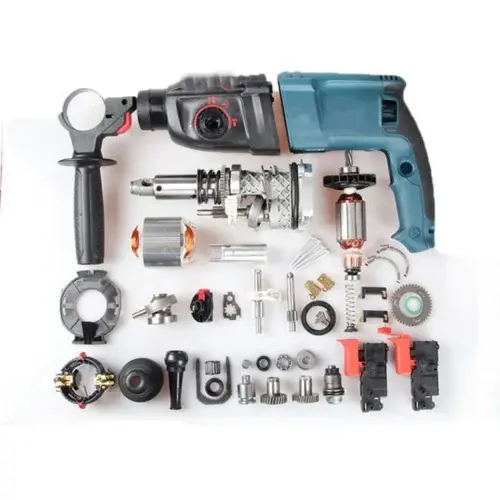
Applications of Hammer Drill
A hammer drill is a versatile tool that can be present in various processes, with its primary functions being drilling and demolition. It can be used to drill holes in materials such as metal, stone, and other similar items. Additionally, it can play a limited role in the demolition of various structures. Below are more detailed applications of a hammer drill:
Demolition and Hole Creation in Bricks:
Bricks fall into the category of hard and tough materials. Therefore, to create holes in them, we need a tool capable of delivering multiple impacts to the structure while having a rotational function. These features are present in a hammer drill, making it suitable for creating holes and demolishing bricks.
Hole Creation in Concrete Surfaces:
In some cases, a regular drill may not suffice. When dealing with a structure that is hard and requires a more powerful tool, a hammer drill, with its higher power, can easily create holes in various types of concrete.
Drilling and Adding Screws and Bolts to Stone:
Stone is a hard and rigid material. Attempting to drill into it with a regular drill can be time-consuming and require a lot of energy. However, a hammer drill can perform this task with less time and effort.
Demolition and Hole Creation in Tiles and Ceramics:
During certain renovations, there may be a need to drill holes or demolish tiles and ceramics. In such cases, a hammer drill can be used. Since ceramics are brittle, it’s advisable to use drill bits with smaller diameters for creating holes.
Application of Hammering Mode:
The hammering mode in a hammer drill becomes noticeable when we require more force for a specific task. By engaging this option, the drill bit’s rotational speed decreases, and the number of impacts increases. This feature is beneficial when dealing with hard materials and needing to create holes with less effort and time.
The ability to switch between drilling and hammering modes is a significant reason for the widespread use of hammer drills. This tool can efficiently perform both drilling and demolition operations simultaneously in various conditions.
Reason for the Widespread Use of Hammer Drills
One of the main reasons that can be mentioned is the dual functionality of the intended product. This structure alone can have the performance of both a drill and a demolition hammer. This feature has led to the widespread application of this tool, allowing us to simultaneously perform two operations, drilling and demolition, in various conditions.
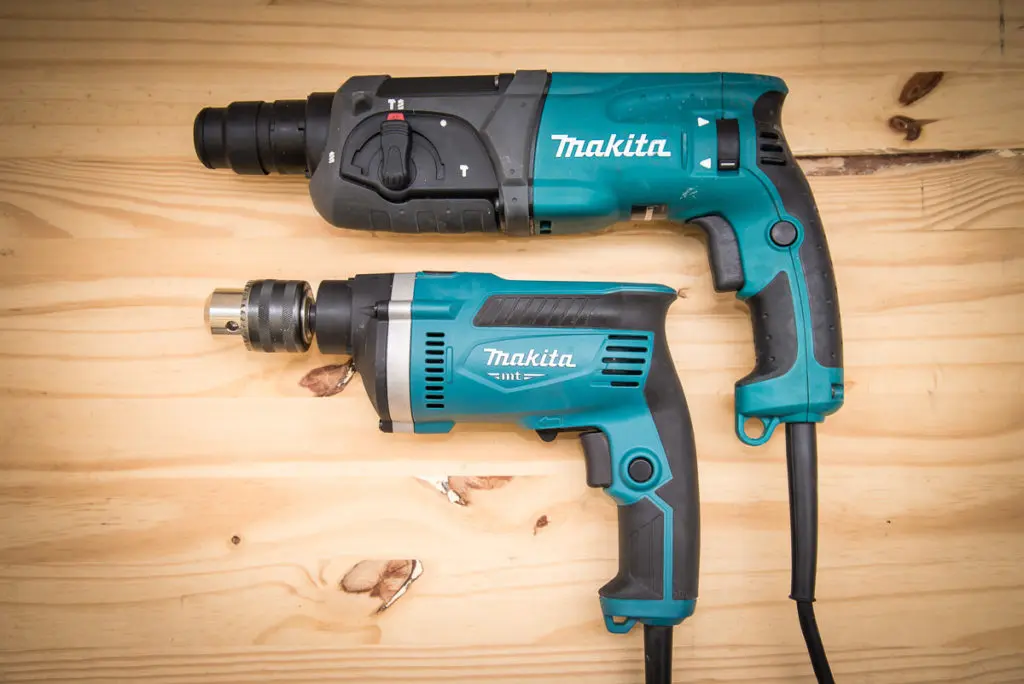
Difference between Regular Drill and Hammer Drill
The most significant difference between these two tools, and one that can be identified, is the ability to generate impact in a hammer drill. This feature allows us to perform two different functionalities with a single tool, thereby enhancing our range of operations. Hammer drills, with their powerful impacts on various structures, distinguish themselves from their regular counterparts. Additionally, these tools have a stronger motor and greater power. Another difference between a hammer drill and a regular drill lies in the type of gears they use. With a closer look, you’ll notice that the gear in a regular drill is smooth, while the gear in a hammer drill is toothed.



